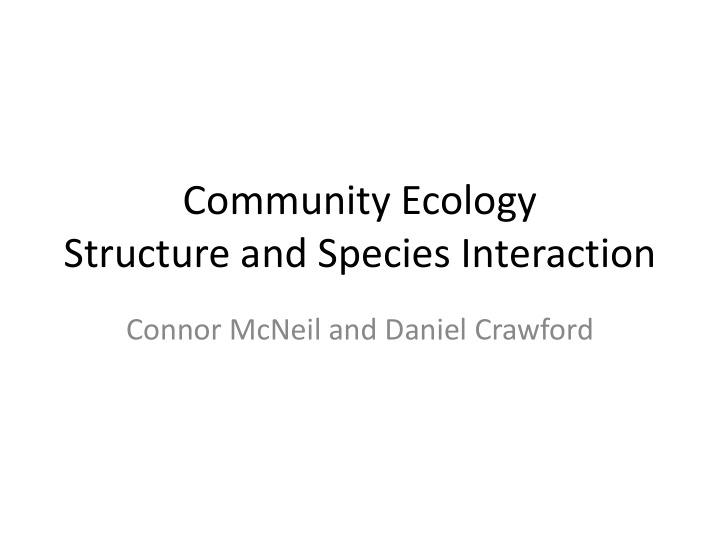



Community Ecology Structure and Species Interaction Connor McNeil and Daniel Crawford
Community Structure (aka Spatial Distribution) Described by: • Physical Appearance: stratification, distribution, and relative sizes of population and species • Species Diversity (Richness): number of different species • Species abundance: number of individuals of each species • Niche Structure: number of ecological niches, how the resemble of differ from each other and how they interact
Difference in Physical Appearance • Terrestrial biomes consist of vegetation patches • Difference in size • Leads to boundries: – Sharp edges: distinct – Ecotones : Gradation
Distribution of Biodiversity • Highest Biodiversity in Tropical Rain Forests • However, High Biodiversity and Low Species Abundance • Latitude: Latitude species diversity gradient : greater diversity in tropics, least at poles (terrestrial systems) • Depth: increases to 2,000m, then decreases, until ocean surface, which has high diversity (aquatic systems)
Species Interaction Competition and Predation • Intraspecific competition: members of the same species compete for resources – Territoriality: Patrolling, marking, and/or defending home/nest/feeding sight • Results in Uniform Distribution • Interspecific Competition: Competition between two or more species for resources
Competition • Interference Competition: one species limits another’s access to resources • Exploitation Competition: species have equal access to resources, but vary in speed and efficiency of exploitation.
Predator-Prey Relations • Predator feed directly on Prey – Individually harmful – However, through predation, Prey species limited in abundance and increased access to food and genetic stock improved – Use eyesight, speed, pack-hunting, etc – Pursuit and ambush
Prey • Naturally avoid being EATEN!!! – Speed, Detection, Protection, etc. – Camouflage, Mimicry – Chemicals: Poison, Irritation, Smell, Bad Taste – Enlargement
Symbiotic Species • Both species helped: – Parasitism* – Lichens, Bacteria, Algae *Can be considered special type of predation
Commensalism • One species helped; one unaffected – Ex: Raccoons and human garbage
Recommend
More recommend